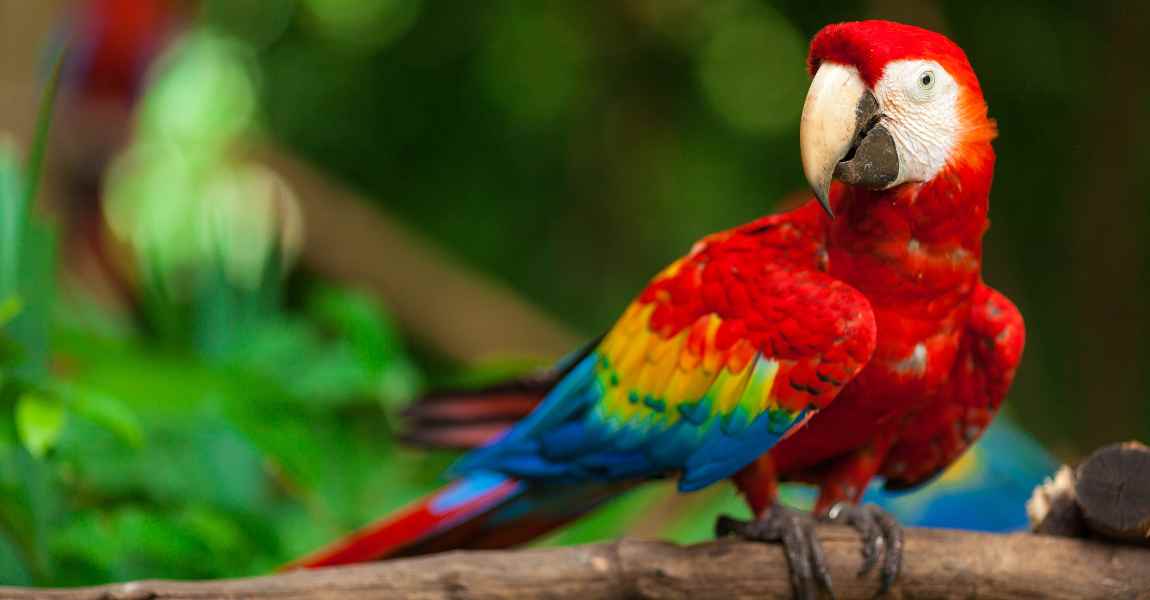Scarlet Macaw (Ara macao): A Comprehensive Guide
The scarlet macaw (Ara macao) is one of the most iconic and visually striking birds in the world. Known for its brilliant plumage and playful demeanour, this large parrot has captivated the hearts of bird enthusiasts and conservationists alike. Below, we provide an in-depth exploration of the scarlet macaw, from its natural behavior and habitat to its care needs in captivity.
Taxonomy and Classification
The scarlet macaw belongs to the family Psittacidae, which includes all parrots. Its genus, Ara, contains some of the most colorful and well-known macaws, including the blue-and-yellow macaw (Ara ararauna) and the green-winged macaw (Ara chloropterus). The scarlet macaw is scientifically classified as follows:
- Kingdom: Animalia
- Phylum: Chordata
- Class: Aves
- Order: Psittaciformes
- Family: Psittacidae
- Genus: Ara
- Species: Ara macao
Physical Characteristics
The scarlet macaw is renowned for its striking appearance. Key features include:
- Feathers: Bright red plumage with splashes of yellow and blue on the wings.
- Beak: Large and powerful, pale on the upper mandible and black on the lower.
- Size: Length of 81-96 cm (32-38 inches) with a wingspan of up to 1.2 meters (4 feet).
- Weight: 900-1200 grams (2-2.7 pounds).
Habitat and Distribution
Scarlet macaws are native to the rainforests of Central and South America. They thrive in:
- Geographical Range: From southern Mexico to the Amazon Basin in Brazil.
- Preferred Habitat: Humid evergreen forests, lowland tropical forests, and savanna-like areas.
- Key Features: Tall, dense trees for nesting and food, often near riverbanks.
Behavior and Social Structure
In the wild, scarlet macaws exhibit the following behaviors:
- Social Structure: Often seen in pairs or small family groups.
- Communication: High-pitched screeches and guttural squawks to maintain contact and alert danger.
- Monogamy: Pairs form lifelong bonds, showing affection through mutual preening.
- Roosting: Communal roosting for protection and social bonding.
Diet and Feeding Habits
The diet of scarlet macaws includes:
- Wild Diet: Fruits, seeds, nuts, and berries.
- Clay Consumption: Neutralizes toxins from unripe fruits.
- Captive Diet: Fresh fruits, vegetables, nuts, and high-quality pellet mixes.
Reproduction and Lifespan
Scarlet macaws have fascinating reproductive and lifespan characteristics:
- Breeding: Sexual maturity at 4-5 years; 2-4 eggs per clutch with an incubation period of 24-28 days.
- Lifespan: 40-50 years in the wild and up to 75 years in captivity with proper care.
Conservation Status
The scarlet macaw is classified as a species of "Least Concern" by the IUCN, but threats include:
- Deforestation: Reduces nesting opportunities.
- Illegal Pet Trade: Poaching for feathers and as exotic pets.
- Conservation Efforts: Protected areas, sustainable land use, and captive breeding initiatives.
Adaptations
Scarlet macaws have evolved the following adaptations:
- Beak and Feet: Strong beaks for nuts and seeds; agile feet for grasping and manipulating food.
- Vision: Excellent eyesight for spotting predators and finding food.
- Camouflage: Bright plumage blends with the colorful rainforest.
Interaction with Humans
Scarlet macaws have long fascinated humans:
- Historical Significance: Cultural symbols in Central and South America.
- Pet Ownership: Regulated in South Africa; permits and ethical considerations are required.
- Challenges: Require significant mental stimulation and social interaction.
Care Requirements in Captivity
Caring for a scarlet macaw includes:
- Housing: Large enclosures (at least 3 meters in length) with natural branches and toys.
- Diet: Fresh fruits, vegetables, and nuts, avoiding salty or sugary foods.
- Healthcare: Annual vet checkups and preventive care.
- Social Interaction: Regular attention to prevent behavioral issues.
Conservation Efforts and Challenges
Conservation efforts focus on:
- Habitat Restoration: Protecting and rebuilding rainforests.
- Community Education: Raising awareness about the importance of macaws.
- Captive Breeding: Supporting wild populations through reintroduction programs.
Interesting Facts
- Scarlet macaws can mimic human speech and solve complex puzzles.
- They consume clay to detoxify their system from potentially poisonous foods.
- They are monogamous, forming lifelong bonds with their partners.
- They can fly at speeds of up to 56 kilometers per hour (35 miles per hour).
Conclusion
The scarlet macaw is a symbol of the vibrant diversity of the rainforests and a reminder of the importance of conservation. Their beauty and intelligence make them both captivating pets and crucial members of their ecosystems. Whether you are considering adopting a scarlet macaw or simply wish to learn more about these incredible birds, understanding their complex needs and behaviors is the first step in ensuring their survival for generations to come.




